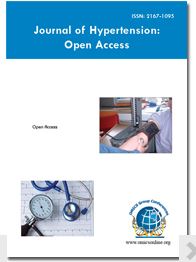Theme:
Nephrology Congress 2020
Conference Series LLC Ltd is overwhelmed to announce the commencement of “18th International Conferences on Nephrology Urology And Therapeutics ” to be held during April 13-14,2020 at in London,UK . We cordially welcome all the eminent researchers, students and delegates to take part in this upcoming herbal diabetes to witness invaluable scientific discussions and contribute to the future innovations in the field of Nephrology Congress 2020..
The theme of the conference falls on “Exploring the recent advancements and new therapeutic approaches in Nephrology”.
Nephrology Congress 2020 includes Keynote presentations, plenary lectures and Nephrology workshops, Nephrology symposiums by eminent kidney health care experts from around the world with outstanding contributed papers of both poster and oral presentations.
Nephrology Congress 2019 has been designed to extensively explore a variety of scientific and clinical aspects of diabetes and kidney disease throughout the lifespan, and throughout the spectrum of kidney disease.
Track 1: Nephrology
Nephrology is a branch of medical science that deals with function and diseases of the kidneys and it focuses on the diagnosis and treatment of kidney diseases. The kidneys are paired retroperitoneal organs that lie at the level of the T12 to L3 vertebral bodies. The kidney has a fibrous capsule, which is surrounded by pararenal fat. The kidney itself can be divided into renal parenchyma, consisting of renal cortex and medulla, and the renal sinus containing renal pelvis, calyces, renal vessels, nerves, lymphatics and perirenal fat. The renal parenchyma has two layers: cortex and medulla. The renal cortex lies peripherally under the capsule while the renal medulla consists of 10-14 renal pyramids, which are separated from each other by an extension of renal cortex called renal columns. The kidneys serve important functions, including filtration and excretion of metabolic waste products (urea and ammonium); regulation of necessary electrolytes, fluid, and acid-base balance; and stimulation of red blood cell production. They also serve to regulate blood pressure via the renin-angiotensin-aldosterone system, controlling reabsorption of water and maintaining intravascular volume. The kidneys also reabsorb glucose and amino acids and have hormonal functions via erythropoietin, calcitriol, and vitamin D activation.
- Nephrology & Renal Studies
- Renal histopathology
- Advances in nephrology
- Artificial kidney
- Pelvic kidney
Track 2: Nephrology & Urology
The urinary and reproductive tracts are firmly connected, and clutters of one frequently influence the other. In this way, a spectrum range of the conditions oversaw in urology exists under the area of genitourinary issue. Urologyconsolidates the administration of restorative and it is nonsurgical conditions, such as urinary tract contaminations and benevolent prostatic hyperplasia, with the administration of surgical conditions. Examples: Bladder or prostate tumor, kidney stones, genetic changes, kidney damage, and stress incontinence.
- Clinical Urology
- Uremia
- Reconstructive Urology
- Urethral Cancer
- Pediatric Urology & Female Urology
- Bladder Cancer
- Urothelial Tumors
Track 3: Geriatric Nephrology
The aims of this study were to assess the clinical utility of total and regional bone densitometry in a large continuous ambulatory peritoneal dialysis (CAPD) population and to determine the clinical, biochemical, and radiographic variables that best identified osteopenic CAPD patients. The diagnostic and prognostic validity of sperm function biomarkers is particularly relevant for males with unexplained infertility in which routine semen analysis fails to detect sub cellular sperm dysfunctions. In this general review, we examine there are several types of acute nephritis. They are Interstitial Nephritis: The spaces between the renal tubules that form urine become inflamed. Pyelonephritis: This type of acute nephritis produces inflammation in the glomeruli. Interstitial Nephritis: This type is often caused by an allergic reaction to a medication or antibiotic. The majority of nephritis infections occur from the bacteria Escherichia coli (E.coli), which is found in the intestine.
- Clinical Renal Densitometry
- Biomarkers in nephrology
- Urogynecology
- Acute Nephrosis
- Pediatric Nephritis
- Glomerulonephritis
- Renal Tubulointerstitial Fibrosis
Track 4: Clinical Nephrology
Clinical Nephrology covers the conclusion and treating of renal syndromes, including primary and secondary hypertension and electrolyte disturbances, and the care of those requiring renal replacement treatment, including dialysis and renal transplant patients. Numerous diseases influencing the kidney are systemic scatters not constrained to the organ itself, and may require uncommon treatment. Illustrations incorporate procured conditions, for example, systemic vasculitides and immune system diseases, lupus and innate or genetic conditions, such as, polycystic kidney diseases. Patients are referred to clinical nephrology doctors after a urinalysis, for different reasons, such as, acute kidney failure, hematuria, proteinuria, chronic kidney diseases, kidney stones, hypertension, and disarranges of acid/base or electrolytes.
- Nephron Clinical Practice
- Critical Care Nephrology
- Stem Cell and Regenerative Nephrology
- Stem Cell and Regenerative Nephrology
- Oncologic Nephrology
- Obstructive Nephropathy
- Nephronophthisis
Track 5: Pediatric Nephrology
The study of pediatric nephrology determines diagnosis and management of infants with an chronic and acute kidney disorders. The division of pediatric nephrology assesses and treats hypertension, hematuria, proteinuria, renal tubular acidosis, nephrolithiasis, glomerulonephritis and kidney damage in children. It also includes complete care to pediatric patients with end stage kidney syndromes, including consideration to patients experiencing peritoneal dialysis, hemodialysis and kidney transplantation in infants.
- Pediatric Nephrology
- Pediatric Renal Failure
- Pediatric Kidney Dialysis
- Advances in Pediatric
- Pediatric chronic hemodialysis
Track 6: Diabetic Nephropathy
Based upon new technological advancements the need for dialysis centers will be reduced, an artificial kidney will be wearable and implantable. Many physicians use patient portals to interact with patients through secure messaging. Though electronic health records from various companies may not talk to each other, patients are able to get information from their various providers through these portals. Recent studies estimated Bio-artificial kidneys might one day be able to do more than filter waste with tubular cells in the dialysis apparatus. The ultimate goal of the potential new modality of treatment is to free End-Stage Renal Disease (ESRD) patients from being tethered for several hours to a dialysis machine or even prevent Peritoneal Dialysis patients from having to conduct multiple daily. Additionally, great strides have been made in medical technology, organ preservation and the development of more effective drugs to prevent rejection. Success rates of transplant surgeries have advanced a great deal. Technological Advances in Renal Replacement even though successful in sustaining life and improving quality of life.
- Type 1 diabetes
- Type 2 diabetes
- ACE inhibitors
- ACE inhibitors
- Angiotensin
- Hyperbaric medicine
- Glomerular filtration rate
Track 7: Treatments in Nephrology
Treatments in nephrology can include medications, blood products, surgical interventions (urology, vascular or surgical procedures), renal replacement therapy (dialysis or kidney transplantation) and plasma exchange. Kidney problems can have significant impact on quality and length of life, and so psychological support, health education and advanced care planning play key roles in nephrology.
- Analgesic nephropathy
- Anti-inflammatory drugs
- Laparoscopy
- IgA Nephropathy
- Medical expulsive therapy
- Robotics Treatment
- Ab mediated treatment
Track 8: Nephrology Nursing
Nephrology Nursing is a planned attempt to increase nursing knowledge by the discovery of new facts through systematic enquiry. It includes: Improvement in patient care, Reduced cost of kidney care provision, Accountability and protection against litigation, Addition to the existing body of nursing knowledge, Enhancement of nursing as a profession.
Renal care nursing is the field of nursing with a focus on the most extreme consideration of the discriminatingly sick or unsteady chronic kidney patients. Contamination revultion and nursing consideration is the control concerned with turning away nosocomial or health awareness related disease, a functional (as opposed to scholastic) sub-order of the study of disease transmission. Infants who need escalated restorative consideration are regularly conceded into a unique region of the clinic called the Neonatal serious care and nursing consideration. The part of backing in discriminating nursing consideration: Critical consideration medical attendants work in a wide assortment of settings, filling numerous parts including bedside clinicians, attendant teachers, medical caretaker analysts, medical caretaker supervisors, clinical medical caretaker authorities and medical attendant professionals. Measurements of Renal Care Nursing’s mission are to give attendants exact, current, and applicable data and lodging to exceed expectations in discriminating consideration rehearse.
- Care for Kidney diseases
- Haemodialysis Nurse
- Peritoneal dialysis Nurse
- Vascular access coordinator
Track 9: Nephrectomy
Nephrectomy is the surgical removal of a kidney. The surgery is performed with the patient under general anesthesia. A kidney can be removed through an open incision or laparoscopically. For the open procedure, the surgeon makes an incision in the side of the abdomen to reach the kidney. Depending on circumstances, the incision can also be made midline. The ureter and blood vessels are disconnected, and the kidney is then removed. The laparoscopic approach utilizes three or four small (5–10 mm) cuts in the abdominal and flank area. The kidney is completely detached inside the body and then placed in a bag.
- Partial nephrectomy
- Cystectomy
- Radical nephrectomy
- Single port laparoscopy
- Renal Embolization
- Small renal masses
- Pharmaceutical representative
Track 10: Nephrology Diagnosis
There are several hospitals offering kidney treatments including dialysis and transplantation. They are well known for health care and fast recovery is promised from the hospital combined with a pleasant and suitable caring atmosphere. According to the global statistics they were nearly 12000 Hospitals in cites associated with kidney treatments and 17790 doctors of USA working in the hospitals.
- Diagnostic, Imaging & Radiation techniques
- Medical ultrasonography
- Computed axial tomography
- Scintigraphy & Nuclear medicine
- Recent advancements in renal therapeutics
- Excess fluids & waste from blood
Track 11: Renal Care
The Renal Care specializes in kidney diseases, hypertension, parental medicine, transplantation, and dialysis. Renal Care Consultants is committed to the analysis, treatment, and counteractive action of renal ailment and damage. It can likewise give the entire adult care from beginning extensive medicinal assessments to long term treatment of restorative conditions.
- Blood tests
- Physical examination
Track 12: Renal Dialysis
Dialysis works on the objective of the diffusion of solutes and ultrafiltration of liquid over a semi-penetrable layer. Diffusion is a property of substances in water substances in water tend to move from a territory of high fixation to a range of low focus. The two primary sorts of dialysis, Hemodialysis and Peritoneal dialysis removes wastes and water from the blood in various ways. Hemodialysis removes waste water by circling blood outside the body through an outer filter called a dialyzer that contains a semipermeable layer. There are five types of dialysis three are primary and two are secondary types of dialysis: Hemodialysis and peritoneal dialysis, hemofiltration are primary types of dialysis and were as hemodiafiltration, and intestinal dialysis is secondary type of dialysis.
- Hemodialysis
- Peritoneal dialysis
Track 13: Kidney Diseases
Kidney diseases, otherwise called nephropathy or renal infection, are harm to or ailment of a kidney. Nephritis is inflammatory kidney infection. Nephrosis is non-inflammatory kidney diseases. Kidney diseases usually affect kidney failure and kidney damage. In exact use, infection signifies the auxiliary and causal diseases entity though kidney failure indicates the impaired kidneys. In common usage these implications cover for instance, the terms chronic kidney disease and chronic renal failure are normally viewed as synonymous. Acute kidney diseases have regularly been called acute renal failure.
- Nephrosis
- Acute Renal Failure
Track 14: Kidney Transplantation
Kidney transplantation or renal transplantation is the organ transplant of a kidney into a patient with end-arrange kidney diseases. Kidney transplantation is commonly named deceased donor known as cadaveric or living donortransplantation relying upon the wellspring of the giver organ. Living donor kidney transplants are formerly differentiated as non-related living transplants or, living related transplants contingent upon whether a biological relationship exists between the kidney donor and kidney recipient. Exchanges and chains are a novel way to deal with grows the living donor pool.
- Kidney transplant donor
- Kidney transplant survival rate
Track 15: Types of Kidney Stones
A branch of medicine which deals with the study of normal kidney function, kidney problems & their treatment. It also involves Renal replacement therapies. Acute kidney failure: Disfunction of the kidneys to filter the waste from the blood. Decreased urinary output, swelling due to urinary retention, nausea, shortness of breath are some of the symptoms. Acute tubular necrosis was death of the tubular epithelial of the renal tubules in the kidneys. Consumption of nephrotoxic drugs & low blood pressure are the common causes. Diabetes insipidus- A condition in which kidneys prevent the excretion of water. Hypocalcaemia & Several Other Case Reports Related to Nephrology. Every nephrologist has received extensive training in general internal medicine, and many nephrologists will treat their patients for other things besides kidney problems. It’s important that patients tell their kidney doctors if they notice any changes in their health.
- Hypocalcaemia
- Nephrotoxic drugs
- Renal Arteriography
The nephrology devices market is driven by technological advancements that are anticipated to serve the market with future growth opportunities. These advancements include inclusion of stem cells, wearable artificial kidneys, combined use of ion-sensitive sensors & electrodes, living membranes, shockwave, and laser lithotripsy.
These technologies serve as efficient methods of renal care, which are capable of improving overall patient health and quality of life. In addition to improved uremic toxin and fluid removal, relatively less hypotension episodes, better control of blood pressure, overall improvement in mineral metabolism, better survival rate, and reduction in hospitalization rates & costs. In addition, these advancements also have a substantial impact on patient’s quality of life through increased volume of dialysate, ultrafiltration capacity, and higher solute clearance.
The unprecedented adoption of unhealthy lifestyle has exerted a major impact on the market, leading to high prevalence of chronic diseases, such as cancer and diabetes, which serve as a contributing factor toward developing kidney and urinary diseases. Moreover, the widening of geriatric population base, which is highly susceptible to developing the aforementioned chronic diseases is expected to impel the demand for highly efficient devices.
The Global market for kidney failure treatment will grow from $39.4 billion in 2016 to nearly $45.6 billion by 2021, with a compound annual growth rate (CAGR) of 3.0% for the period of 2016-2021.
Asia-Pacific leads the market with a 43 per cent share, followed by North America and Europe
The latest report on the nephrology and urology devices market from Global Data has highlighted how an explosion in diabetes and hypertension combined with aging populations is driving investment to meet patient needs.
In 2016, renal dialysis equipment accounted for over 55 per cent of the market value, at over $17 billion, and this is expected to grow to over $26 billion by 2026.
The renal dialysis equipment market in japan will rise steadily from $5 billion in 2015 to over $11 billion by 2022, representing a Compound Annual Growth Rate (CAGR) of 3.48%.
Conference Highlights
- Track 1: Nephrology
- Track 2: Nephrology & Urology
- Track 3: Geriatric Nephrology
- Track 6: Diabetic Nephropathy
- Track 7: Treatments in Nephrology
- Track 8: Nephrology Nursing
- Track 9: Nephrectomy
- Track 10: Nephrology Diagnosis
- Track 11: Renal Care
- Track 12: Renal Dialysis
- Track 13: Kidney Diseases
- Track 14: Kidney Transplantation
- Types of Kidney Stones
To share your views and research, please click here to register for the Conference.
To Collaborate Scientific Professionals around the World
| Conference Date | August 24-25, 2020 | ||
| Sponsors & Exhibitors |
|
||
| Speaker Opportunity Closed | |||
| Poster Opportunity Closed | Click Here to View | ||
































